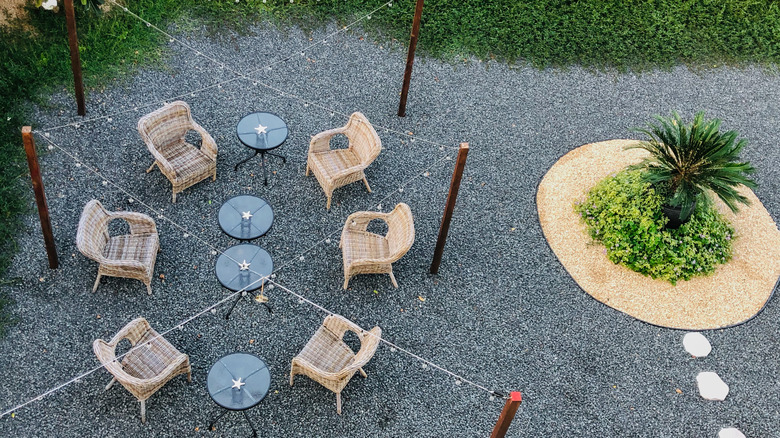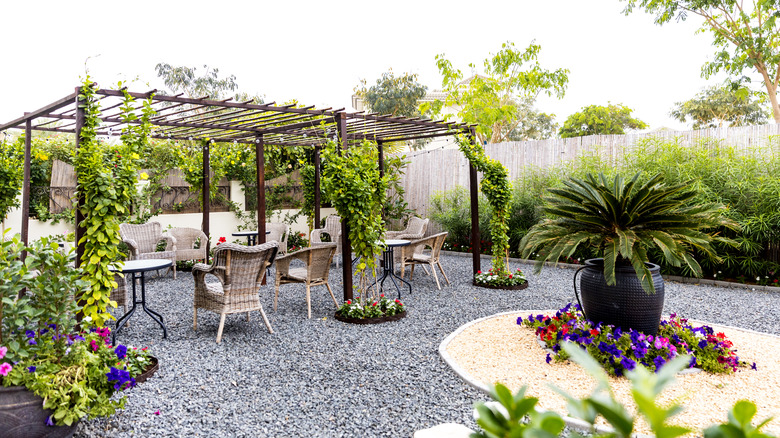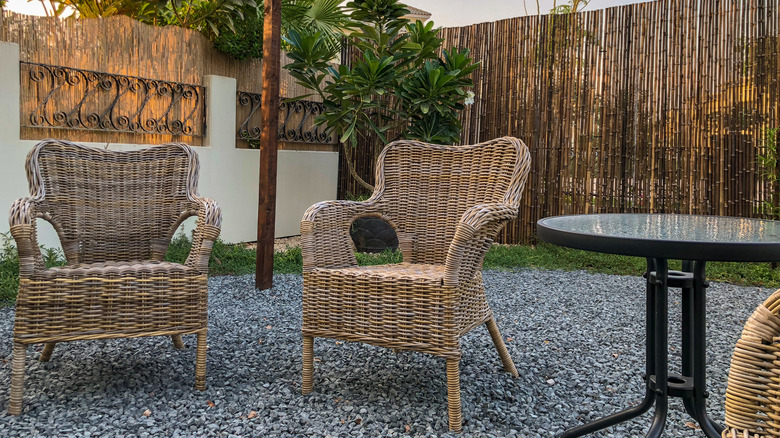What To Consider Before Installing A Pea Gravel Patio
Patios made from pea gravel are a great option for homeowners. This affordable, small-sized stone lends a rustic elegance to outdoor areas when used in the design. However, its placement demands thoughtful planning to ensure it satisfies your needs and aesthetic preferences.
There are several factors to consider before installing a pea gravel patio, such as its pros and cons, cost, and maintenance requirements. Pros range from affordability, drainage abilities, and ease of installation. At the same time, cons include the gravel being easily displaced, discomfort when walking on bare feet, and limitations with patio furniture that can be used.
From a cost standpoint, while pea gravel patios tend to be cheaper than other types, all costs associated with their installation must be considered carefully. Regarding maintenance, while pea gravel patios typically don't require much care or work from their owner to keep looking their best, it is still wise to understand exactly how best to care for them and their long-term viability.
Pros and cons of a pea gravel patio
There are many pros to installing a pea gravel patio. First, their installation process is straightforward and easy, making them an attractive option for DIY enthusiasts. All that is needed is a shovel, ground cover, pea gravel, and a little imagination. This ties to another appealing aspect of pea gravel patios — their versatility and customization potential. For example, you can shape a pea gravel patio to any design desired, creating a unique outdoor space that reflects your style.
Additionally, the cost of pea gravel tends to be significantly lower than traditional patio materials like poured concrete, making it an attractive, cost-effective alternative. What's more, these patios have excellent water drainage capabilities. The unique structure of pea gravel creates effective water runoff, minimizing the risk of standing water.
However, it's important to recognize the potential drawbacks of a pea gravel patio. Its rough texture can prove challenging to navigate, especially for those with mobility difficulties, and its susceptibility to displacement due to heavy traffic or severe weather conditions can make it difficult to keep in place. Additionally, pea gravel's tendency to hold debris and dirt makes it somewhat tricky to maintain pristine cleanliness.
Finally, the stability offered by pea gravel patios may only be suitable for some outdoor layouts. They might not provide firmness and support for bulky furniture or equipment. Therefore, thoroughly evaluating your needs and space characteristics is essential before opting for a pea gravel patio.
Cost and maintenance
Determining the cost of installing a pea gravel patio involves several variables. These include the patio's dimensions, the quality of the pea gravel selected, and the labor expenses associated with the installation. Pea gravel prices typically run $50 per cubic yard on average, with approximately two cubic yards required for a 10- by 10-foot patio. Another component contributing to the total cost is edging. Adding edging helps contain the pea gravel and prevents it from spilling onto other areas in your yard.
Maintenance is another aspect to consider when installing a pea gravel patio. Although pea gravel patios are generally regarded as low maintenance compared to other patio types, they still have some upkeep requirements. Homeowners should keep a leaf blower or a similar device handy to regularly remove debris and dirt from the surface. Over time, adding fresh pea gravel may be necessary to maintain the desired depth and ensure the patio looks fresh and inviting. Also, installing a weed barrier is an excellent preventative strategy to prevent the intrusion of weeds through the pea gravel.


